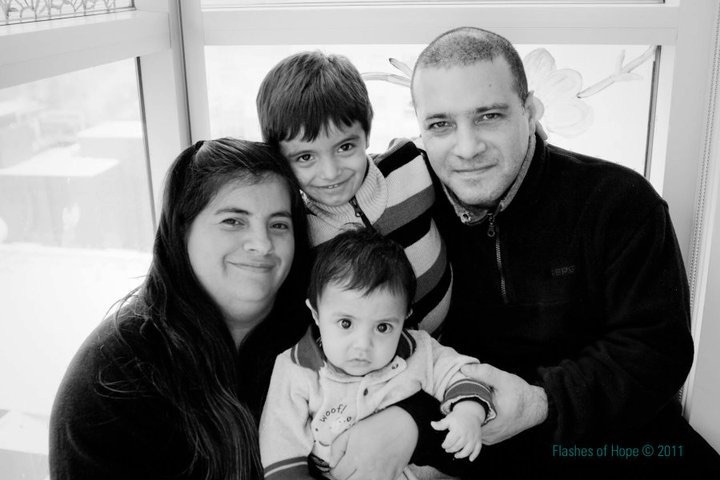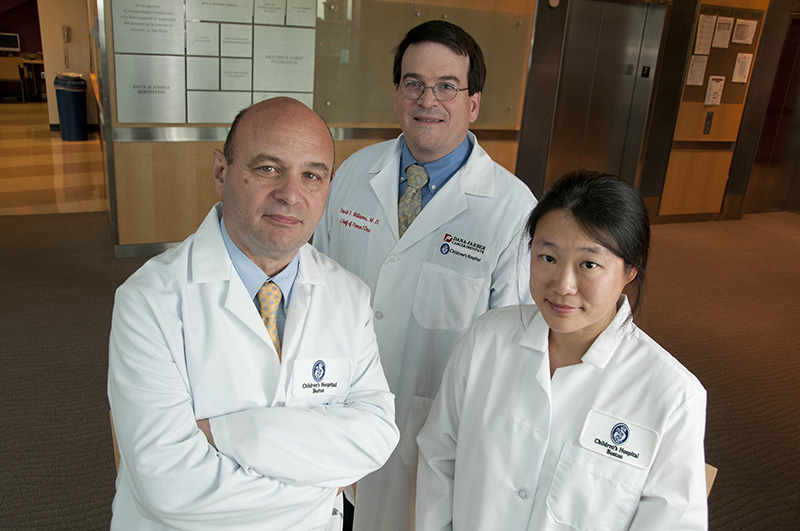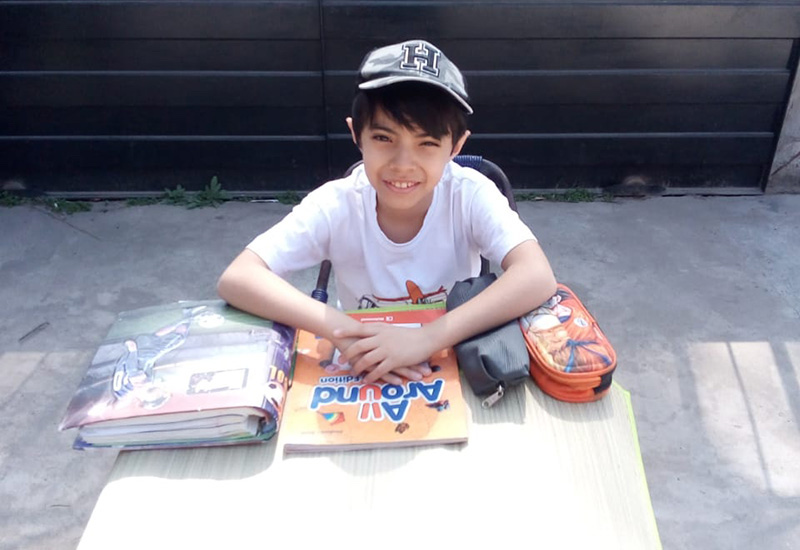A rebirth in Boston: Gene therapy turns 10

Lea la versión en español.
Dec. 17 marks a decade since Agustín Cáceres was “renacido” — reborn. That’s how his parents, Alberto and Marcela, describe the day their son received his new gene.
Born in 2010 with X-linked severe combined immunodeficiency (SCID-X1), Agustín spent the first few months of his life in isolation, at home in Buenos Aires, Argentina. His parents wore personal protective equipment and kept their older son, Jeremías, away from Agustín for fear the slightest cold or illness could be fatal. Better known as “bubble boy disease,” the rare, inherited illness, caused by mutations in the IL2RG gene, affects only boys. It leaves their bone marrow unable to develop T-lymphocytes — the white blood cells critical for fighting virus infections.
The Cáceres’s first child, Ivan, died from SCID-X1 when he was 5 months old. When Jeremías was born healthy, his parents made the decision to bank stem cells from his umbilical cord blood to safeguard future siblings. But Agustín’s tissue type was not compatible with his brother’s. Without intervention, he would likely die before his first birthday.
Today, 10-year-old Agustín is an active fifth-grade soccer and tennis player, who no longer needs to take precautions — none of which would be possible without a genetic breakthrough by doctors at Boston Children’s Hospital 10 years ago. “He brings us so much happiness to everyone,” says his mom Marcela. “There are no words to express our gratitude.”

A legacy of gene therapy
In 2010, a team of researchers, led by Dr. David Williams, who founded the Boston Children’s Gene Therapy Program, marked an advance in gene therapy — a safer way of delivering DNA into patients’ cells. Gene therapy wasn’t new, but in earlier European trials, one-quarter of patients had developed treatment-related leukemia. To address this serious problem, Dr. Williams and his team collaborated with other gene therapy centers to develop a self-inactivating gamma retrovirus. This retrovirus was designed to eliminate the risk of triggering the expression of genes that could lead to leukemia.
Agustín led the way as the first to receive gene therapy at Boston Children’s as part of an international clinical trial. His blood stem cells took up the retrovirus and a healthy copy of the gene. Six months later, he began making functioning T cells.
From those early beginnings, gene therapy has made significant progress. Researchers have turned to lentiviruses to deliver the corrected genes with even less risk of turning on leukemia genes.
“We feel very privileged to have been part of this groundbreaking effort to develop safer, but effective, viral vectors to treat SCID-X1,” says Dr. Williams. “Agustín and his family were truly pioneering in agreeing to receive this new treatment — the first since the leukemia-adverse effects in the European trials. We are truly gratified by the results. Seeing Agustín grow up playing soccer and interacting with his friends is an amazing and heart-warming experience.”

Continuing the circle of hope
Since that historic day in December 2010 when Agustín was “reborn,” the Boston Children’s Gene Therapy Program has treated more than 100 children and adults with complex genetic conditions.
The Cáceres family doesn’t take its pioneering status lightly. Alberto and Marcela see Agustín as the first in what they hope will become a long chain. Each child treated is another link added. “It’s continuing a circle of hope,” says Marcela.
They remain in close contact with another South American family whose son also received SCID gene therapy at Boston Children’s. “We were able to help this family make a decision to move forward,” says Alberto. “A couple of years later, they visited us in Argentina to thank us for supporting them through that difficult time.”

Agustín doesn’t remember the months he spent in Boston as a baby, but he is forever grateful. He is learning English with the hope of returning to Boston Children’s someday to personally thank his care team, who his parents say, “made us feel like members of their family.”
Smiling, Agustín says, “No solo soy Argentino sino también Americano.” “I am not only Argentinian but also American.”
Learn more about the Gene Therapy Program’s decade of progress.
Related Posts :
-

Promising advances in fetal therapy for vein of Galen malformation
In 2024, Megan Ingram* of California and her husband were preparing for the birth of their third child when a 34-week ...
-

The hidden burden of solitude: How social withdrawal influences the adolescent brain
Adolescence is a period of social reorientation: a shift from a world centered on parents and family to one shaped ...
-

The journey to a treatment for hereditary spastic paraplegia
In 2016, Darius Ebrahimi-Fakhari, MD, PhD, then a neurology fellow at Boston Children’s Hospital, met two little girls with spasticity ...
-

A toast to BRD4: How acidity changes the immune response
It started with wine. Or more precisely, a conversation about it. "My colleagues and I were talking about how some ...





